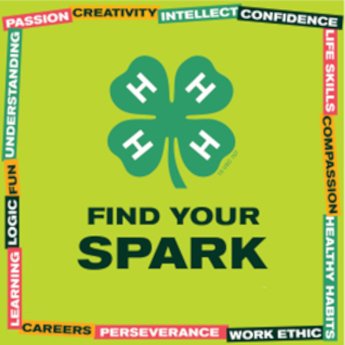Career portfolios and 4-H projects – What’s the connection?
Connecting career portfolios with 4-H Projects supports National 4-H and Career Technical Education goals while fostering life skills.

An organized sample of documents and work accomplishments compiled over time equals the contents of a portfolio. Although it is sometimes creatively put together, a portfolio is not a scrapbook. A career portfolio is a communication tool commonly reviewed by prospective employers to get a visual representation of one’s skills, knowledge, abilities and potential in a specific professional area. It is a concise, thought-out presentation that showcases one’s talents over time in relation to a career pathway that can include, but is not limited to marketing, photography, education, or veterinary medicine.
Contents of a career portfolio traditionally include a typed letter of introduction, a typed resume, letters of recommendation, samples of one’s work, an official high school (and/or college) transcript and copies of one’s personal interests and achievements. A reflection statement of learning and growth should also be included with the work samples. Texas State University provides an overview of a career portfolio that may be worth review.
Personally, I have kept a career portfolio for more than 30 years and I continue to tweak and use as needed, adding new samples as appropriate. A career portfolio is also a way to track professional development and career milestones while reflecting on one's accomplishments.
In 4-H, the thought process and task that one goes through to create a career portfolio supports the communication portion of the National 4-H Global Leadership Competency. Moreover it enhances and fosters 4-H life skills related to working (marketable skills and self-motivation), managing (planning/organizing) and thinking (decision making and problem solving).
Furthermore, as 4-H staff and volunteers work with young people to record, document and put the pieces together for a career portfolio, they are supporting the Advance Career and Technical Education and the National Career Clusters Framework. Students need to select educational and work history highlights to include in a career portfolio and maintain the portfolio to document knowledge, skills and experience in a career field.
All of those 4-H project and record books, project photographs, awards and scholarship applications 4-H’ers are encouraged to complete do have a grander purpose! By integrating 4-H experiences into career portfolios, youth are empowered to step confidently into their futures—equipped, experienced, and ready to lead. Encouraging young people to start building their portfolios early ensures they are prepared to showcase their unique strengths and achievements when opportunities arise.
Michigan State University Extension and Michigan 4-H Youth Development help to prepare young people for successful futures. As a result of career exploration and workforce preparation activities, thousands of Michigan youth are better equipped to be a part of and contribute to the future workforce.



 Print
Print Email
Email